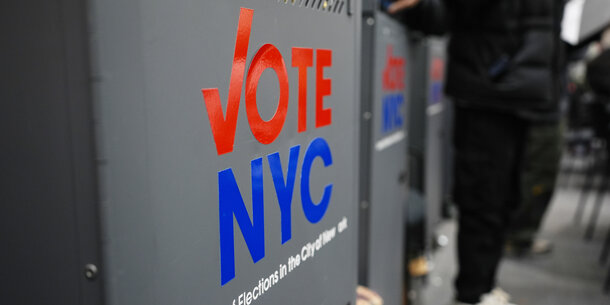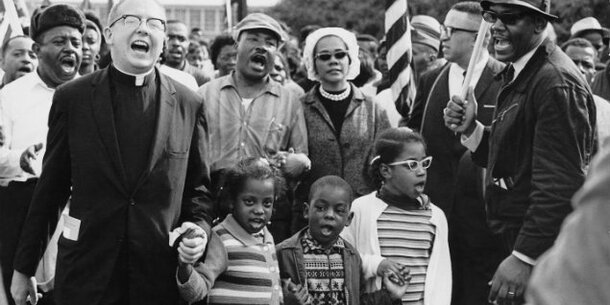There are sounds that help define the 20th century for me: the resounding thud as you close the heavy front door of a 1950s car with tail fins. The rat-a-tat of a touch typist racing along the keyboard of a manual machine. And the satisfying thwack of the lever on a voting machine after you have cast a ballot.
My fling with lever voting machines lasted longer than most unrequited passions, since New York City used these 50-year-old relics until 2010. The romance of voting machines was actually part of my unstinting enthusiasm for Election Day — no matter the year or the quality of the candidates on the ballot.
Since I cast my first ballot as a University of Michigan college student in 1968, I have been smitten with the humble rituals of voting. The friendly lines of neighbors realizing that they are doing something of importance. The mostly elderly poll workers searching in books (and now on computer screens) for my name and my signature from 1983, when I first registered in New York. And the “I Voted” stickers that I find myself sometimes still wearing two days later.
So much of the civic religion that I associated with Election Day involves people coming together in the same place at the same time to affirm democracy. That same mood, I want to stress, can also be achieved with early voting.
The happiest election crowd I have ever witnessed was in Columbus, Ohio, the Thursday before the 2008 election. Even though it was a two-hour wait to cast early ballots at the downtown Veterans Memorial Building, everyone seemed thrilled to vote after problems at Ohio polling places on Election Day 2004. Conducting informal interviews as the line snaked through the building, I encountered almost universal support for Barack Obama, who went on to carry Ohio by 200,000 votes.
This ingrained belief in the uplifting value of in-person voting (except, of course, for the sick and the homebound) explains my antipathy to the idea of everyone casting ballots by mail.
Phil Keisling, who championed Oregon’s pioneering conversion to vote-by-mail in the late 1990s as secretary of state, is a long-time friend. And I will admit that I was impressed by the turnout rate in Oregon, which hit 79 percent in 2000 in the first presidential race conducted through universal vote-by-mail. But despite hearing Keisling’s arguments in person many times, I adamantly stuck to my belief that vote-by-mail was an inferior Election Day product, the equivalent of replacing a gourmet meal with a TV dinner.
As universal vote-by-mail spread to other western states (Washington, Colorado, Utah, and Hawaii), I would make jokes about being forced as a reporter to do an exit poll standing next to a mailbox. In reality, I actually tried with mixed success in the run-up to the 2012 election to interview Colorado voters in the Denver suburbs dropping off their ballots at the Arapahoe County administration building. Four years later, it was so much more emotionally satisfying to conduct my own exit poll standing outside an actual polling place in Nottingham, New Hampshire, on Election Day 2016.
Like so many other certainties, my reflexive opposition to vote-by-mail has been upended by Covid-19.
The partisan chaos surrounding Tuesday’s Wisconsin primary and judicial election serves as a powerful reminder that — in a devastating crisis — there will be moments when in-person voting is impractical and potentially dangerous.
Monday Wisconsin Democratic Gov. Tony Evers tried to postpone the April 7 in-person balloting on health grounds but was promptly overruled by the Republican state supreme court. Many polling places closed because of a shortage of election workers, guaranteeing long lines. And Wisconsin residents wanting to vote absentee only learned Monday night — after the U.S. Supreme Court ruled — that their ballots had to be postmarked by April 7 to be valid.
In a front-page Sunday editorial, the Milwaukee Journal Sentinel declared, “It is not safe for voters to go to the polls next week. … If the election is held, turnout is likely to be abysmal, which may disenfranchise large blocs of voters and call the results into question.”
Wisconsin voters have been confronted with a set of choices that are incompatible with democracy. Do they risk their health voting in person at a crowded polling place in the midst of a pandemic? Or, with the Postal Service upended by the virus, do they gamble that their mailed-in absentee ballots will arrive on time?
Universal voting by mail may not be a panacea in normal times. But every state should have a system in place for fair and orderly absentee balloting in emergencies like this one. No voter in America should ever again have to endure the breakdown of democracy that we are witnessing in Wisconsin.
Covid-19 has also taught me a lasting lesson about my personal romance with in-person voting. Yes, coming together at a polling place on Election Day is a heartwarming tradition worthy of a Norman Rockwell cover.
But the essence of democracy isn’t this act of physical assembly. What counts is the ability of every citizen to cast a valid vote, whether it is in person, by mail, or delivered by a carrier pigeon. The setting is a quaint detail. What I should have been personally celebrating all along instead of the rituals of Election Day is the right to vote itself.
The views expressed are the author’s own and not necessarily those of the Brennan Center.



